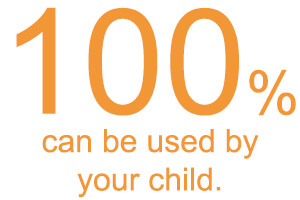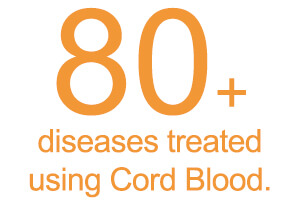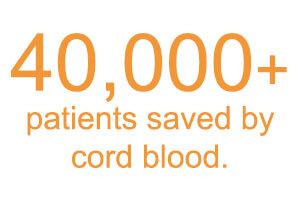Stem Cells & Healing
Newborn stem cells can help heal the body, treat diseases, accelerate recovery times & provide countless therapeutic benefits. Taking the first steps in preserving your newborn’s stem cells can be a life-changing decision for the future health of family. Parents who would like to preserve their newborn’s stem cells must decide to do so ahead of the birth since there is only 1 chance at collecting these cells: a 15 minute window of opportunity just after the birth. The ability of these stem cells to be used to treat diseases is invaluable when it comes to protecting your child’s future health.
Your Stem Cells
Using one’s own stem cells for therapeutic use in the future is often referred to as “personalized medicine” & is now regarded as the new frontier in medicine. Families across the world are now learning that storing these universal stem cells can be thought of as a “biological insurance”. Previously, it was unknown what amazing potential these stem cells can offer. Thanks to recent advancements in stem cell research, much more data is illuminating the possibilities of treating diseases.
Learn More


Why should you preserve your newborn's stem cells?
Stem cells can help heal the body, accelerate recovery times, & provide countless therapeutic benefits. Doctors are continuing to research more ways to use cord blood & cord tissue stem cells to treat additional diseases. Cord blood & tissue are currently being used in different phases of clinical trials for several debilitating & life-threatening diseases. HealthBanks aims to enable cell therapy treatment for families using newborn stem cells for conditions that currently have no cure.
- This is a once in a lifetime opportunity.
- Stem cells at birth are pure & have not been exposed to diseases, contagions or mutations.
- Currently, there are more than 80 diseases recognized by the FDA that can be treated using cord blood-derived stem cells including certain types of cancer, blood disorders, immune deficiencies & metabolic diseases.
- Over 40,000 patients have already benefited from cord blood transplants to treat their diseases.
- Siblings & Parents can benefit from their newborn’s stem cells: Siblings have up to 75% chance of perfect or partial match while parents have a 50% of match.
- Using cord blood from a family member is sometimes about twice as successful as those from a non-relative.
Current Treatments
Malignancy
Acute Lymphoblastic Leukemia, Acute Myelogenous Leukemia, Burkitt’s Lymphoma, Chronic Lymphocytic Leukemia, Chronic Myelogenous Leukemia, Hodgkin’s Disease (Lymphoma), Juvenile Chronic Myelogenous Leukemia, Juvenile Myelo-Monocytic Leukemia, Lymphoma (type not specified), Multiple Myeloma, Neuroblastoma, Non-Hodgkin’s Lymphoma
Immune Deficiency/Disorder
Adenosine Deaminase Deficiency, Chronic Granulomatous Disease, DiGeorge Syndrome, Griscelli Syndrome, Idiopathic Thrombocytopenic Purpura, Immune Dysregulation, Polyendocrinopathy, Enteropathy, X-linked (IPEX) Syndrome, Omenn Syndrome, Myelokathexis, Reticular Dysgenesis, Severe Combined Immune Deficiency (and related diseases), Systemic Lupus Erythematosus, Thymic Dysplasia, Wiskott-Aldrich Syndrome’, X-Linked Agammaglobulinemia, X-Linked, Lymphoproliferative Disorder
Blood Cell Defect
Chediak-Higashi Syndrome, Chronic Granulomatous Disease, Congenital Neutropenia, Diamond-Blackfan Anemia, Familial Erythrophagocytic Lymphohistiocytosis, Fanconi Anemia, Glanzmann Thrombasthenia, Hemophagocytic Lymphohistiocytosis, Histiocytoses, Kostmann Syndrome, Langerhans Cell Histiocytosis, Lymphocyte Adhesion Disease, Lymphoproliferative Syndrome, Metachromatic Leukodystrophy, Myelodysplastic syndrome, Myelofibrosis, Neutrophil Diseases, Nezelof Syndrome, Osteopetrosis, Paroxysmal Nocturnal Hemoglobinuria, Platelet Diseases, Severe Aplastic Anemia, Shwachman-Diamond Syndrome, Sickle Cell Disease, Sideroblastic Anemia, Thalassemia (b Thalassemia), X-linked HyperIgM Syndrome
Metabolic Disorder
Adrenoleukodystrophy, Alpha-Mannosidosis(a-Mannosidosis), Amegakaryocytic Thrombocytopenia, Aspartylglucosaminuria, Congenital Erythropoietic Porphyria, Dyskeratosis Congenita, Fucosidosis, Gangliosidosis, Gaucher Disease, Hurler Disease, Hurler-Scheie Disease, I-cell Disease, Infantile Ceroid Lipofucoscinosis, Krabbe Disease, Lesch-Nyhan Syndrome, Maroteaux-Lamy Syndrome, Morquio Syndrome, Sanfilippo Disease, Sanhoff Diease, Sialidosis, TaySach Disease, Wolman Disease
Future Treatments
Cord Blood Stem Cells
Acquired hearing Loss, Autism, Cerebral Palsy, Hypoplastic Left Heart Syndrome, Neonatal Oxygen Deprivation, Stroke, Type 1 Diabetes, Cartilage Repair, Critical Limb Ischemia, HIV, Neurodegenerative Disorders, Premature Lungs, Traumatic Brain Injury
Cord Tissue Stem Cells
Alzheimers Disease, Aplasticanemis, Cardiomyopathy, Cartilage Repair, Cerebral Palsy, Connective Tissue Diseases, Diabetes (type 2), Erectile Dysfunction, Liver Failure, Lung Injury, Lupus, Multiple Sclerosis, Muscular Dystrophy, Myocardial Infrction, Osteoarthritis, Ovarian Failure, Psoriasis, Parkinsons Disease, Retinitis Pigmentosa, Rheumatoid Arthritis, Sepsis, Spinal Cord Injury, Stroke, Traumatic Optic Neuropathy, Ulcerative Colitis

